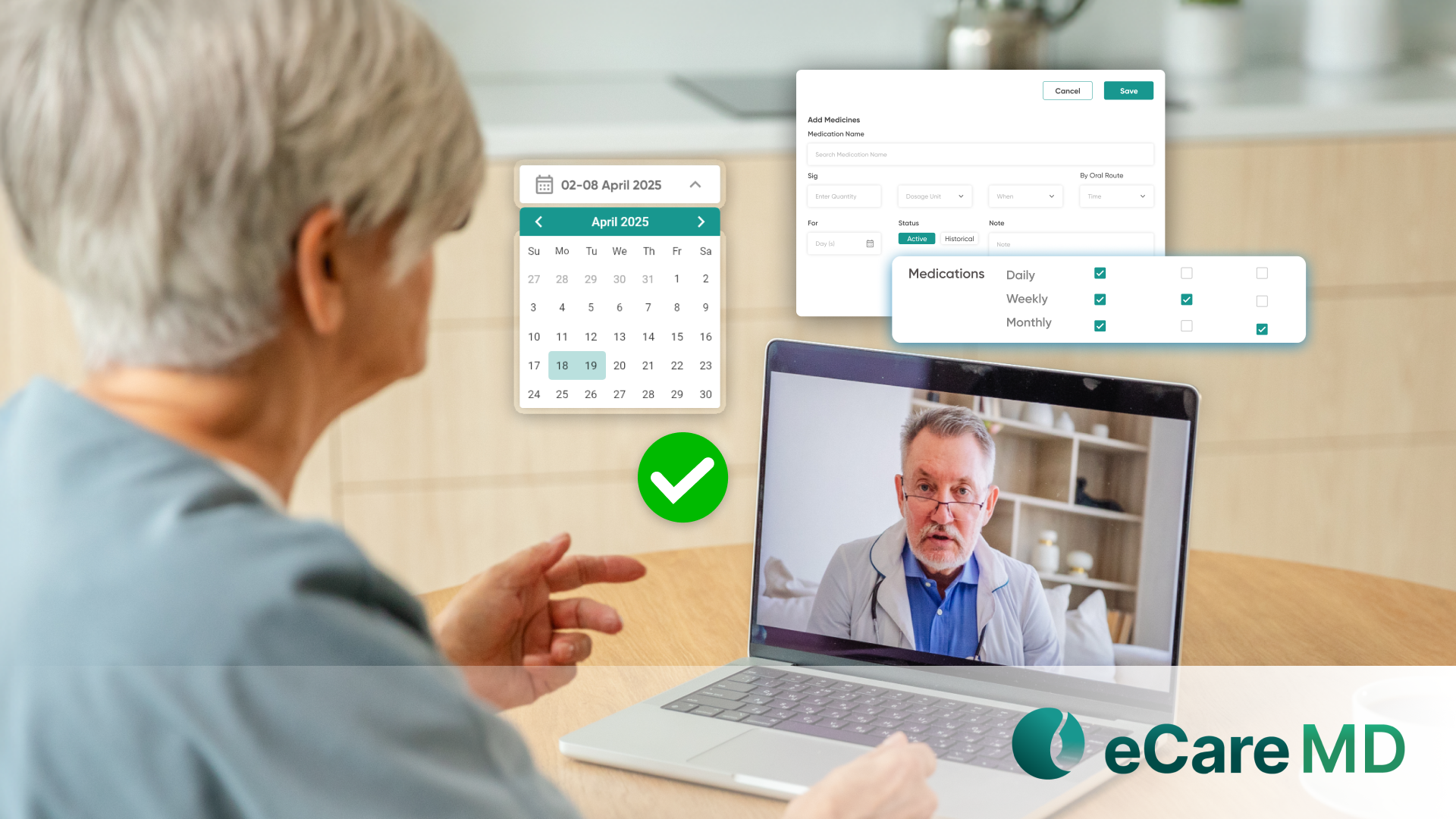Client overview
The client has urgent care healthcare services, based in 10 different locations in the United States. Their primary goal is to provide urgent care to patients with high-risk chronic conditions. With the specialist provider staff, the client is in the process of implementing Medicare’s remote patient monitoring program for patients who need urgent care remotely to overcome their chronic conditions. Current business challenges faced by the client business are as follows;
Business Challenges
1. Unable to monitor patients after discharge, leading to a 45% readmission rate
While providing urgent care, the client practice has faced challenges in taking care of patients after getting discharged from hospitals, where the care might be needed for patient follow-ups, self-care adherence, and medication reconciliation. Missing timely follow-ups, insufficient real-time patient monitoring, leading 45% readmission rate within the client’s practice.
2. Patients returning with preventable complications

Real-time monitoring of patients’ daily health for post-hospitalized patients plays a crucial part in remote patient monitoring. Without having the tools to manage patients remotely for the care they needed for their health conditions, most patients from the client practice were returning for repetitive hospital visits with health complications. This leads to poor quality of care from the client’s provider team.
3. No early warning system for deteriorating patient conditions
For remote patient monitoring, the lack of real-time patient vital data and the early warning system for the same affects the risk level of the patient’s health. In some critical situations, like high or low blood pressure or low sugar level, the provider is not getting notified on time, resulting in putting the patient’s health at risk and miscommunication between the patient and the provider. This causes the client’s practice to perform necessary actions against the patient’s conditions in critical situations.
4. Staff spending excessive time on follow-up calls without vital sign data
Inefficiency of patient vital data while handling urgent care remotely, the practice faces difficulty in making patient follow-ups, without any timely health report, the follow-ups have no evidence to make action plans, resulting in poor quality of health assessment.
Solution
While having missing workflows to treat patients remotely and recognizing the urgent need for continuous blood pressure monitoring in patient management, the client practice raised an inquiry to Medarch Inc. for care coordination software. By following that, the client’s practice interacts with Medarch’s team to discuss their challenges and solutions. The Medarch Business Analyst team with an understanding of the potential requirements in the client’s business. After receiving the approval from the client, the team has successfully implemented the eCarMD care coordination software for the client’s practice. The eCareMD starts showing the impact by streamlining staff workload, providing the best health tech solutions for remotely monitored patients, specifically designed for comprehensive urgent care management. The key business solutions are as below; .
Solution Highlighted
1. Real-Time Post-Discharge Monitoring with Automated Patient Vital Tracking
The eCareMD platform provides continuous monitoring for discharged patients through device integration functionality that tracks vital signs. Patients receive automated check-ins and reminders, while clinical staff have real-time visibility into patients’ outcomes in a real-time analytical dashboard.
2. AI-Powered Predictive Risk Assessment and Early Warning System
The platform integrates with remote monitoring devices that continuously monitor patient vital signs, medication adherence, and symptoms. With AI Capabilities, the software predicts any potential risk before it occurs to patients. The AI system automatically identifies patients with the highest risk for hospitalization and generates personalized alerts, enabling proactive care management to prevent unnecessary hospital visits..
3. Automated Clinical Alert System for Critical Vital Signs
eCareMD includes a comprehensive alert system that immediately notifies clinical staff when patient vital signs are at risk level. The system provides quick notifications for critical situations such as HIgh/Low blood pressure, blood glucose levels, or poor functioning heart rate, ensuring timely intervention during emergency situations.
4. Integrated Care Coordination and Communication Platform
The platform streamlines patient follow-up through automated medication reconciliation,a structured follow-up system, and secure patient-provider communication channels. Clinical staff receive comprehensive patient reports with vital sign trends, medication adherence data, and symptom identification, which enables informed decision-making during follow-ups for the providers.

Value Added
1. Reduced Hospital Readmission Rate from 45% to 12% Within 8 Months
The real-time monitoring and AI-powered analytics helped providers to identification of risk patients, allowing for early interventions that prevented unnecessary readmissions. The practice achieved improvement in patient outcomes while reducing healthcare costs and improving patient satisfaction with post-discharge care.
2. Prevented 78% of Potential Complications Through Early Detection
The AI-powered early warning system identifies patient conditions before they become critical, enabling timely interventions that prevent emergency department visits and hospitalizations. Patients received timely care before complications, resulting in smoother recovery processes and improved clinical outcomes.
3. Improved Response Time for Critical Patient Conditions by 85%
The automated alert system reduced delayed response time for critical vital signs of the patients, which significantly improved patient safety. Clinical staff act immediately when patients experience dangerous blood pressure readings or other critical conditions, preventing serious complications.
4. Enhanced Staff Efficiency and Quality of Follow-up Care
The integrated platform reduced inefficient follow-up calls by providing clinical staff with comprehensive patient data before each interaction. Staff productivity increased by 60% while follow-up quality improved through assessments and targeted care planning.

